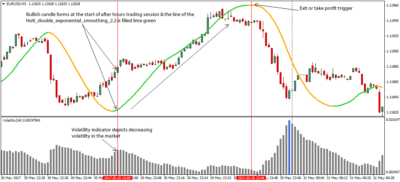Financial Markets
Examples of highly-organized capital markets are the New York Stock Exchange, the London Stock Exchange, NASDAQ, and the Tokyo Stock Exchange. Whether you are actively seeking a career change, or are content with your current position, you owe it to yourself to discover whether a career in capital markets supervision at the OCC is right for you. If you are highly competent in any of these areas, with a proven ability to identify and resolve problems, you should consider a career in capital markets supervision with the OCC. Examples of secondary markets are the London Stock Exchange, the New York Stock Exchange, NASDAQ, etc. When a VC or PE firm opens a fund, it begins the process of raising a large pool of capital, which it will then use to invest in promising private companies. Capital markets also reduce the cost of doing business by providing the global economy with a reliable source of cash or liquidity.
For example, governments and corporations making long-term investments are always looking for long-term investors. In other words, it’s a place where companies can sell debt — usually in the form of bonds — to investors to raise funds. Financial capital is money entrepreneurs and businesses use to buy resources and supplies.
The OCC defines capital markets as asset-liability management, treasury activities, and trading of financial instruments. This broad definition encompasses a wide-range of risk identification, management, and control functions, and requires examiners have expertise in several specialty areas within capital markets. The secondary debt capital market involves the resale of already issued bonds for a higher or lower price, depending on the market. Selling debt may sound odd, but it’s akin to taking out a large-scale loan. The investor, usually another company or government, earns interest on the investment, similarly to how a bank would when they extend things like mortgages or auto loans to customers.
That is, they should follow what has loosely been referred to as a „random walk.“ This implies that historical returns are useless for predicting future returns, which is consistent with weak-form market efficiency. There were nearly 3,400 reported public offerings in 2020 at a median size of $360 million and an average amount raised of $550 million. Access to capital is particularly critical for small businesses to grow and scale. Learn more about what we do to facilitate ways to raise capital by visiting our small business information site as well as our Office of the Advocate for Small Business Capital Formation. At the Securities and Exchange Commission (SEC), we work together to make a positive impact on America’s economy, our capital markets, and people’s lives.
For public markets, most trading takes place via secondary markets, including exchanges like the Frankfurt Stock Exchange, Euronext, and New York Stock Exchange (NYSE). Despite their similarity in name, capital markets and money markets are distinctly separate from one another. Generally intended for long-term investments of at least one year or more, the capital markets are a way for businesses to secure money from investors in return for partial ownership in their company. As we’ve seen, capital markets are places where investment capital is raised, usually through stocks or bonds, and where these instruments are traded between investors in a liquid and orderly manner. However, there are a few other terms that often get used interchangeably with the term capital markets, but they have different meanings.
This research helps the Commission shape policy actions and identify where legislation may be needed. The main difference between debt and equity markets is that those who purchase equity are owners whereas those who purchase bonds are lenders who are only entitled to a fixed interest rate. A bond is a type of investment — an investor essentially loans a company money https://business-oppurtunities.com/career-goals/ when they buy a bond. In return for loaning (or investing) that money, the buyer receives the promise of future repayment and a fixed rate of interest above their initial investment. Some of these are centralized, such as equity securities, foreign exchange, and some derivative securities. As mentioned earlier, transactions can take place in two types of markets.
Definition and Examples of Capital Markets
Both debt and equity are money for the company to use to accomplish its goals. We move in lock step with colleagues to escort capital to products and markets that meet our clients’ investment goals. Offering capital markets solutions in the single-tenant sector with experience in net lease investment advisory, sale leaseback and build-to-suit transactions.
Debt securities are traded on the bond market and are IOUs that can come in the form of bonds or notes. They essentially represent the borrowing of money that will be paid back at a later date with interest. Valuations are an indicator of investors’ risk appetite for the VC strategy as well as the quality of the startups that are in the market raising capital. For this reason, they affect many areas throughout the venture cycle, from negotiations on investments to investor fund performance. In the public markets, a company’s market capitalization (or market cap) is often casually considered to be their valuation, though investors may each have their own valuation for a specific company based on their own models or analysis. Funds are investment vehicles that investors can use to manage and spend large amounts of pooled capital.
What are Capital Markets?
Both debt capital markets and equity capital markets exist as departments within investment banks where securities are bought and sold to raise capital. However, in equity markets, companies issue shares, or small pieces of ownership in the company, for investors to buy. There are stock markets, where equity shares of publicly traded companies are listed for investors to buy and sell.

In this article, we’ll define capital markets, discuss the role they play in the financial system, and talk about the types of financial markets that are and are not included in this category. The secondary market, on the other hand, includes venues overseen by a regulatory body like the Securities and Exchange Commission (SEC) where existing or already-issued securities are traded between investors. The New York Stock Exchange (NYSE) and Nasdaq are examples of the secondary market. Under semistrong-form efficiency, security prices fully reflect all public information. Thus, only traders with access to nonpublic information, such as some corporate insiders, can earn excess profits. Under weak-form efficiency, some public information about fundamentals may not yet be reflected in prices.
Conversely, bonds are safer if the company does poorly, as they are less prone to severe falls in price, and in the event of bankruptcy, bond owners may be paid something, while shareholders will receive nothing. Capital markets primarily feature two types of securities – equity securities and debt securities. Both are forms of investments that provide investors with different returns and risks and provide users with capital with different obligations. On the other hand, the secondary market refers to stocks, bonds, or other securities being traded between investors.
A Capital Markets leader
However, the money that you invest in equity securities is not required to be paid back by the business. Mutual funds give investors exposure to lots of different kinds of investments. Many small businesses conduct IPOs and earn money to become large companies. They also stimulate new businesses related to supplies, production and delivery, and provide a good or service that consumers value. Harness real estate and facilities to improve patient experience, advance financial performance and mitigate risk. Providing clients with CTL Financing, Ground Lease Financing and other long-term high-leverage structured finance solutions for real estate of all asset classes and geographies.
Companies must file statements with the Securities and Exchange Commission (SEC) and other securities agencies and must wait until their filings are approved before they can go public. We oversee approximately $115 trillion in securities trading on U.S. equity markets annually. The CMU initiative was launched by the Juncker Commission, which adopted the first CMU action plan in September 2015.
Functions of Capital Market
The largest capital markets are the currency markets, followed by bond markets, then the global equities marketplace, and over-the-counter derivatives markets. All are popular among investors and businesses seeking liquidity, opportunity, and price transparency. A capital market is a place that allows the trading of funding instruments such as shares, debentures, debt instruments, bonds, ETFs, etc. It is a source for raising funds for individuals, firms, and governments.
- Thus, efficient markets theory is consistent with at least part of the market decline from October 14 through October 19, 1987.
- Some of these are centralized, such as equity securities, foreign exchange, and some derivative securities.
- However, there are a few other terms that often get used interchangeably with the term capital markets, but they have different meanings.
- Thus, for example, if capital markets are efficient, there is no reason to expect managements to emphasize the short run at the expense of long-term projects.
When you buy stock through your broker, it’s an example of secondary market trading since your shares come from other investors, not the company itself. There are also options and futures markets, commodity markets, cryptocurrency markets, and more, although these fall more under the even broader category of financial markets, which refers to any platform where investors organize and trade assets. The key distinction to keep in mind is that capital markets are places where capital can be raised, not just where assets can be traded among investors.
That is, periods of relatively high returns tend to be followed by periods of relatively low returns and vice versa. Summers, Poterba, and Shiller conclude from this evidence that prices often move away from their fundamentals and that markets are, therefore, inefficient. But Fama and French suggest another explanation consistent with market efficiency—that actual returns are mean reverting because rationally determined expected returns are mean reverting. The empirical tests of capital market efficiency began even before Eugene Fama of the University of Chicago offered a theory in 1970. The early tests hypothesized that if prices fully reflected available information, if information arrives randomly, and if expected returns are constant, then stock returns from one period to the next should be statistically independent.
Capital markets – definition and meaning
New stocks and bonds are issued to investors in the primary market, often through a mechanism we call ‘underwriting.’ Investors buy and sell existing securities in the secondary market. Most of the activity in the capital markets occurs in the secondary markets. Debt capital markets (DCM) is a division of investment banking and a concept in corporate finance. As a concept, a debt capital market is a space for companies and governments to buy and sell debt as a way to raise capital or make a profit. DCM divisions of investment banking companies facilitate the creation and sale of debt securities for their clients. An overwhelming amount of empirical evidence shows that stock prices react quickly, in the expected direction, to the release of information.
- Investment activities, including portfolio objectives, prepurchase due diligence, portfolio analytics, monitoring, and risk reporting.
- A second kind of evidence was a more direct challenge to market efficiency.
- So it’s best to know the general definition as well as the other types of markets.
- When you own equity securities of a company, you essentially own a portion of that company and are entitled to any future earnings that the company brings in.
- Shareholders want management to maximize stock prices and thus will attempt to ensure that their managements undertake only projects (decisions) that increase the value of their stock.
- The Securities and Exchange Commission (SEC) is an example of a federal-level agency that regulates the reporting of information by any entity that wishes to issue securities in a capital market, or have its securities traded in a capital market.
For example, when a company issues new shares in an initial public offering (IPO), that’s an example of primary market trading. When a company decides to raise capital via a debt offering and sells bonds to institutional investors, that’s a primary market situation. Companies hire investment banks to help issue new shares or bonds (a process known as underwriting), and, for this reason, the primary market is often referred to as the „new issue“ market. The majority of modern primary and secondary markets are computer-based electronic platforms. Primary markets are open to specific investors who buy securities directly from the issuing company. These securities are considered primary offerings or initial public offerings (IPOs).
Local and national governments, businesses, as well as banks and financial institutions also participate in these markets. A capital market refers to the financial market where individuals or institutions buy or sell securities. Capital markets allow companies to sell their stocks to many investors to get working capital and expand the company. A capital market is a financial market in which long-term debt (over a year) or equity-backed securities are bought and sold,[1] in contrast to a money market where short-term debt is bought and sold. Securities and Exchange Commission (SEC) oversee capital markets to protect investors against fraud, among other duties. Capital markets are financial markets that bring buyers and sellers together to trade stocks, bonds, currencies, and other financial assets.
Those who seek capital in this market are businesses, governments, and individuals. The most common capital markets are the stock market and the bond market. They seek to improve transactional efficiencies by bringing suppliers together with those seeking capital and providing a place where they can exchange securities. At their simplest, you can think of capital markets as where various entities such as institutions, governments, and investors trade long-term financial instruments. This broad term captures public equity markets (including stock and bond markets), debt markets, and private markets. Capital markets are a critical part of the economy that enable the flow of capital between investors and businesses that need funding to operate and grow.
Secondary markets serve as a way to provide investors with liquidity in the relatively more limited and opaque environment of private company shares. These transactions give investors the opportunity to realize value and return capital without a full exit. Issuing or selling stocks takes place through an IPO or initial public offering. The amount buyers are willing to spend and sellers want to make determines the price of the stock. Unlike a loan, which has to be repaid, issuing an IPO or „going public“ allows others to buy a share or a portion of your business and become a partial owner.
Capital markets can lead the way in transition finance – OMFIF
Capital markets can lead the way in transition finance.
Posted: Tue, 09 May 2023 11:16:50 GMT [source]
For example, many people use the term „financial markets“ to include just money markets and capital markets, while others use it in a broader sense. So it’s best to know the general definition as well as the other types of markets. Several entities participate in capital markets, including pension funds, mutual funds, other institutional investors, and individual investors.




